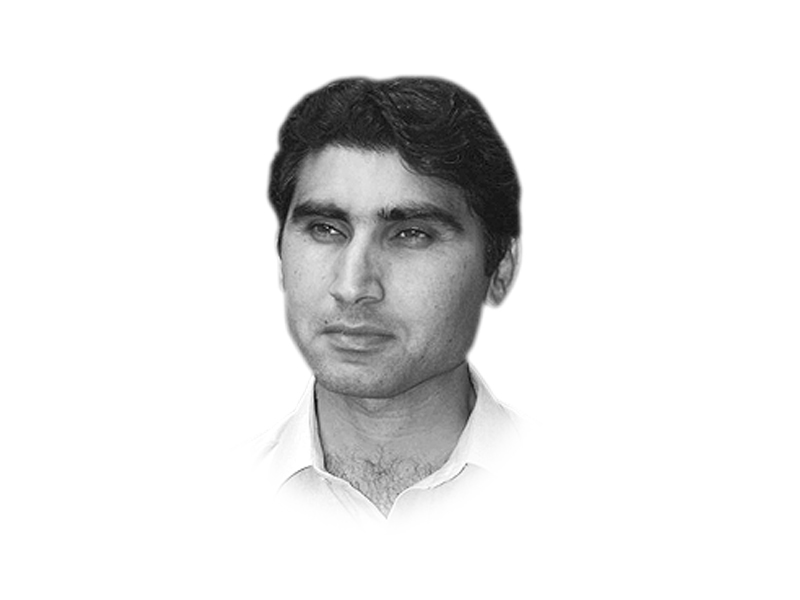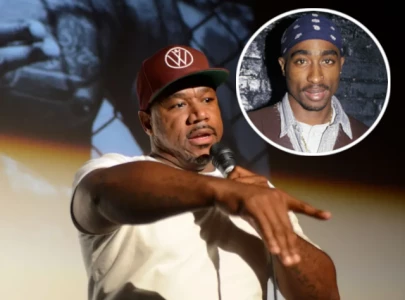
Reflecting on this dangerous state of affairs, every year, global rights organisations bemoan the consequences of being a journalist and reporting in Pakistan. The outcome is quite productive at least in one obvious way, and that is that international donors do not feel any hesitation in providing funds for the capacity-building of journalists in Pakistan. Despite this generosity, however, the graph of violence against journalists remains on the rise.
At the national level, the burgeoning media system has so far remained insensitive to this issue. Ever since the killing of the tribal journalist, Hayatullah Khan, in a terror-related incident in 2006, reaction from the mainstream media has remained symbolic. Violence against marginalised journalists is covered no different from the coverage of other fateful incidents of terror, which so far, has helped the media elite and privileged journalist bodies to bury the underlying debate in the rituals of meaningless media reports and protest demonstrations.
Does this mean that the killing of journalists is no different than that of civilians in terror-related attacks? Or do we need to seriously revisit the issue with a different perspective? Understandably, the number of civilian lives that acts of terror consume is far greater than the magnitude of violence reporters suffer in the militancy-hit areas. This, however, does not make the issue any less important. If civilians’ deaths are the collateral baggage largely caused by the fight between the militants and security forces, victimisation of journalists is the direct outcome of dismantling dissident voices.
More than threatening, the matter is confusing. Some experts believe that the US intervention in Afghanistan (in 2001) has fuelled terrorism in Pakistan, which coincided with the wave of media liberalisation in 2002. Therefore, violence against journalists would become lower once US forces withdraw from Afghanistan in 2014. This optimism hardly seems to make sense if we look into the patterns of violence in totality. In fact, the current wave of intimidation, torture and death of journalists is part of a structural violence that is hardly going to end without inviting grassroots measures from the marginalised journalist community.
For example, initially, the Taliban operating in the troubled areas of the north-west avoided claiming responsibility for killing journalists. Therefore, the law-enforcing agencies counted such cases as terrorism related, in order to avoid the fatigue of investigation. This official gloss-over encouraged local criminal groups to browbeat journalists, which increased direct crime against reporters. In a few incidents, some criminal elements in Peshawar adopted the Taliban’s tactic of writing intimidating letters to journalists. By January 2012, the issue became less confusing after a Taliban spokesman claimed responsibly for the killing of tribal journalist Mukarram Khan.
If a lack of investigation encourages direct crime against journalists, the impunity with which the security agencies operate turns this crime into structural violence. Unlike the Taliban, the intelligence agencies have put in place a system in which journalists seem to be causing their own death by dissenting from the norm. Therefore, the consistent pattern of dumping journalists’ body bags along the roadside in Balochistan is a consequence of certain laid-out conditions, which compel state agencies to eliminate dissenting voices. Similarly, the intimidation of dissident journalists in the tribal belt and Khyber-Pakhtunkhwa is considered the outcome of conditions that are the consequence of militancy and has nothing to do with the ruthless official approach to suppress journalists.
While the official pattern of violence against dissident journalists is perfectly understandable, if not pardonable, what is most worrying is the transformation of direct crime and structural violence into the most threatening form of cultural violence. Ruthless media routines, which thrive on deprivation and exploitation, are the major manifestation of cultural violence against journalists. Death for journalists comes on a much larger scale in Pakistan. The urban nature of journalism prevents the resourceful mainstream media from feeling the pain that is experienced by the marginalised, underpaid reporters, who cover militancy in the peripheral conflict zone of the tribal belt and Balochistan. What with long hours, deadline pressures and no safety measures, reporters covering conflict are victims of nerve-wracking working conditions.
No less threatening is the issue of representation for the marginalised journalists. Every year, the elite media channels repeat the ritual of inviting celebrity talk show hosts (in Pakistan, current affairs hosts consider themselves journalists) to discuss the plight of reporters in conflict zones. No bigger disservice could be done to journalism than the way such programmes are conducted. In their evasive and superficial arguments, the talk show hosts briefly discuss the role of intelligence agencies in threatening journalists. But structural violence caused by media routines hardly gets a mention at all. This job is meticulously crafted by disassociating the dangerous working routines of journalists from the culture of violence in the country’s troubled areas. In other words, violence against journalists is covered as a sporadic terror activity like any other bomb blast, which has nothing to do with the working conditions available to journalists.
Therefore, the security apparatus, the Taliban and the urban media system are seemingly mutually exclusive forces. However, they all treat journalists in the same ruthless way, which has normalised violence against journalists serving in the less privileged north-west and Balochistan. Improvement is possible if the journalist community in the conflict-hit areas could utilise its collective agency at the press club level and follow a united agenda to take up the issue of security at all appropriate forums including the Supreme Court.
Published in The Express Tribune, February 12th, 2013.
COMMENTS (15)
Comments are moderated and generally will be posted if they are on-topic and not abusive.
For more information, please see our Comments FAQ












Thank you dear media expacially sana bucha, Hamid mir, Junaid muhammed, Aisha baqs, Nadia khan show, Nadia mirza(CNBC) Utho jago pakistan and so on for your informations and for everything you are doing for pakistan keep it up.
I agreed with Irfan Asharaf because Pakistan became the most dangerous country for journalists. Particularly tribal areas where up till now 13 tribal journalists martyred and so many injured in the ongoing War on terror. More than hundred of journalists have lost their relatives and houses and now they are living in other parts of country. The problems is that the media houses on whose they working does not paying any salaries due to which they area facing problems.
@A J Khan: There is a deifference between the job description of a journalist and army personnel. Someone joining the army is signing up to die for the country if needed. That is not the case with a journalist.
Journalists - the type you mention invite scorn because of their conceit and disdain. They act as if they know everything. They are bullies with a mike and a camera - and that also make them a target. That does not, however, justify killing of any innocent.
@A J Khan: "Next in Line are the personals of Armed Forces. They have died willingly in line of duty with pride and without regret....." . I have seen military men with guns which are used, if necessary to shoot people. I have also seen journalists shooting too with their cameras. You are right, shooting is shooting, why do these journalists whimper?
in what way are journos elite. they always act hoity toity I have noticed.
Syed Irfan Ashraf you have pointed to the issue of Journalists (not the anchors/news organizations owners) there target killing, making them calm forever.
Journalism has not really delivered up to expectations in Pakistan. How many examples of investigative journalism have we seen ? I have not come across any effort by journalists to dig and go after the most powerful class -- the Military and the Mullah. Nobody has bothered to seriously expose the links between these classes and the militants, even though 40,000 innocent civilians were massacred in cold blood. Still we hear stories about how CIA/Mossad and RAW are behind the violence. Journalists must learn the first lesson of doing their job without fear or favor, without ideological and religious bias. Subsequently, they will have a right to call themselves journalists.
What is so special about media and Journalists? Just compare your figures with the common people who have died in terrorists attacks. Next in Line are the personals of Armed Forces. They have died willingly in line of duty with pride and without regret. Alas it is the media which supported terrorists to save their skins and stood with those who were killing innocent people, imposing their self aggrandizing system and were equating good with bad and seeing the Armed Forces and the terrorists in equal terms. Shockingly this policy was adopted by the courts also in initial days when the terrorists were looking strong. So if you want to follow a career passionately then sacrifices are part of the game.
After the whole Tahir-ul-Qadri episode, I have lost respect for journalists. Irrespective of whether I support qadri or not, the media bias at times was just absolutely shocking and deplorable. But of course it dosen't justify the killing of journalists in this country.
Life is equally cheap for all.
Life is equally cheap for common man in whole country and particularly in Karachi as well where you are mentally prepared for looting, snatching, target killing and some time getting stray bullets for the deeds you never did whenever you leave out and go away from your places.Traffic jams are often and always deprive you with your valuable belongings and you do not find any cop or ranger in such places when adventures are being celebrated by looters. Owning reputed business, handsome property and even a mere good mobile set can take you to such trouble you may not even think for.Staying few hours in the heart of city in most of the areas may give you such impression that as you are living in a battle ground where small arms fire take place regularly.Our little kiths have no space to grow rather they are living in the world of fear and frustration. A common man is less interested who owns all this irrespective of their affiliation with political parties, taliban or ban organization and their only need is peace full atmosphere. those who can afford and manage are leaving Karachi for Punjab or abroad but those who can not are waiting for some unknown or some mercy of Allah that may protect them in these environment. So journalist are not exception in this society
With all due respect, part of the problem is within. Almost all journalists in Pakistan think of themselves being 'above the law'. So they over estimate their safety and security, take risks and pay the heavy price. Journalists are a part of this corrupt society, so how on earth that we never hear an individual or a media house booked, trailed and convicted in Pakistan?